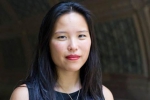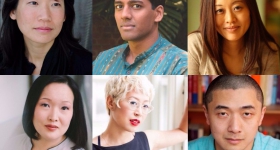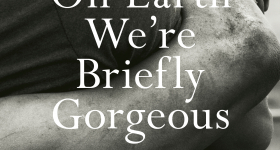“Dear Elia, Sometimes I think of killing myself,” writes guest editor Mimi Khúc in a letter to her daughter, which serves as a note of introduction to Asian American Literary Review’s (AALR) mental health issue entitled Open in Case of Emergency. Because an invitation to be vulnerable is a great part of what makes AALR’s mental health issue so ground breaking, there seems to be no other way to engage with this issue than to follow Khúc’s courageous lead.
Dear reader: I, too, have wanted to kill myself. After graduating from college, I accepted a yearlong Fulbright grant to teach English in South Korea. It was the first time I had returned to the country of my birth since I was adopted at three months old. The year was a painful blur, and during the time I spent in Korea and for nearly a year afterward, I often thought about suicide. I had experienced periods of depression since adolescence, but those months following my return from Korea dropped me into the worst period I can remember. There were weeks and months during which I both couldn’t sleep and struggled to get out of bed, unable to fully articulate what hurt (which was everything). I was ashamed that I couldn’t identify what was “wrong” and as a perfectionist who prided herself on her accomplishments, I was ashamed that I couldn’t pull myself out of it.
I wish I had AALR’s Open in Case of Emergency issue then because it provides not only a theoretical discussion of mental health issues facing Asian American communities today, but also serves as a vital and practical resource for those struggling against mental illness. During the worst periods of my depression, human touch felt almost painful -- now I see it as my body’s way of attempting to protect myself. But what did help comfort me, however feebly, in those days, was the sensation of holding something in my hands: a cup of tea, a letter from a friend, a pet. AALR’s issue, packaged in a box and labeled with a bright red “Open in Emergency” sticker, provides plenty to touch: letters to unfold, books to read, tarot cards to turn over in the hands, and a “DSM Asian American Edition.” The DSM, or The Diagnostic and Statistical Manual of Mental Disorders, published by the American Psychiatric Association and now in its fifth edition, is often considered the authoritative text for providing language and criteria for classifying mental disorders. The DSM Asian American Edition, which the editors note they have “hacked” by tearing out all the pages and replacing them, does not merely provide alternative criteria for mental health diagnoses; it introduces new ways of engaging with mental health altogether. For example, Genevieve Erin O’Brien designs pages of card design layouts meant to be cut and made into a deck, which would then prompt acts of selfcare and performance, curated with images from the artist’s Instagram, and giving instructions that range from the practical, to the humorous and whimsical: “Ignore the voice of your inner monologue” and “Fuck Shit Up” and “Imagine a glitter of unicorns * A ‘Glitter’ is the collective noun for unicorns.”
The “DSM Asian American Edition” subverts the very structures and assumptions of the dominant narratives and discussions surrounding mental health in the United States, and in doing so, exposes the ways in which they often underserve or exclude the Asian American community. The issue also provides a practical toolkit of alternative methods of engaging with aspects of mental health that include guides to redefining psychological or psychiatric terms, as well as drawing on personal story, cultural history and tradition to reframe issues such as immigration, disability and intergenerational and family trauma. Another alternative method comes in the form of a tri-fold brochure that adapts existing literature on postpartum depression to center the experiences of mothers of color:
AALR also challenges the very notion of what “mental health” is. For example, Kai Cheng Thom points out, “despite all of the terminology that exists to define and classify the symptoms of insanity, there aren’t many definitions of what mental health really is.” Thom goes on to explain that mental health is “the power to exist within, and sometimes define, the conventions of sanity, normalcy, the status quo, capitalism, white patriarchy” and additionally, that mental heath is something that we can achieve or possess. Khúc further argues in her introduction:
My child, the world makes us sick. And then tells us it is our fault. Sickness as individual pathology, a lack of ability or will to “achieve” wellness. The world tells us what wellness looks like, marks it as normal. Moral. Like whiteness, wellness as an ideal to strive for, a state of being in constant performance.
Finally, David Mura’s essay on couple’s therapy discusses the complexity of being a person of color engaging with a therapeutic discourse based on the assumption that “whiteness is never viewed as being significant to the white person’s identity or to their mental problems or life experiences.” In other words, common mental health paradigms, which are primarily directed at white people, often preclude discussion of race and therefore suggest, on some level, that believing that race is related to mental health, or being a person of color at all, is abnormal -- even crazy.
I’m still negotiating my own relationship to mental health, including exploring the role of adoption. That I was too young even to remember the event leads to an overwhelming sense of sorrow and unresolved grief that aches with more urgency each time I experience another similar loss from which I will likely never receive closure. However, one of the most empowering aspects of my own journey is developing a narrative about my experiences that makes sense to me, which is to say, treating feelings and symptoms not as indicators of what’s abnormal or wrong, but as guides to what I might want to explore more deeply. Later in Thom’s article, the author asks, “What if, instead of clinging to the fantasy of mental health in order to deny our suffering, we asked our suffering what it is trying to say?”
Recently, I’ve been dealing with an overwhelming family emergency and during one particularly hard day, I texted my friend Rachel to alert her to the anxiety and possible panic attack that I had no clue how to handle. She suggested that instead of trying to suppress or fight whatever I was feeling, I try to “make friends” with the feeling. She said that in similar moments, she would “say hello” to the feeling and thank it for being there and letting her know she was alive. I tried repeating the same phrases to myself, and then found myself adding encouragement: ‘we can do this.’” And eventually, it came true. The regular practice of coaching myself through anxiety attacks didn’t make everything better, but it helped me get through those first crucial 20 minutes, and the next 20 minutes, and the 20 minutes after that. I’ve grown to view my own state of mental health -- or spiritual/emotional/psychological/cultural being-ness -- as a complex network of relationships among my biological makeup, my life experiences, and the social, political, and economic forces that have influenced those experiences. I will likely always deal with depression in some way or another, but this doesn’t preclude me from aspiring to so-called “normalcy,” however illusory, and may, in fact, be a means to discovering my own ways of resisting norms that oppress or silence. Sometimes even surviving a day can be an act of resistance, as Johanna Hedva reminds us in “sick woman”:
The most anti-capitalist protest is to care for another and to care for yourself. To take on the historically feminized and therefore invisible practice of nursing, nurturing, caring. To take seriously each other’s vulnerability and fragility and precarity, and to support it, honor it, empower it. To protect each other, to enact and practice community. A radical kinship, an interdependent sociality, a politics of care.










Comments